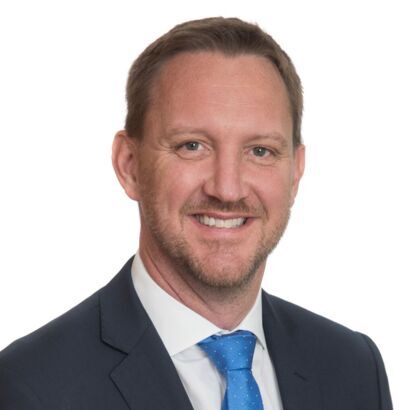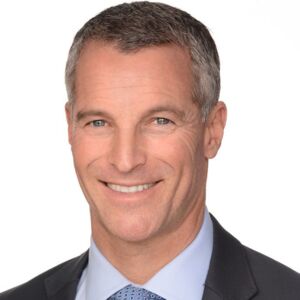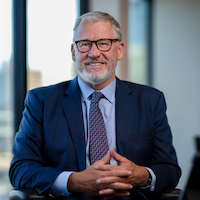Pension funds eye manager partnerships
By Elizabeth Fry

The pressure on the investment management industry is building as asset owners bring more assets in-house, prompted by industry consolidation and onerous new benchmarking rules.
Graeme Mather, the head of distribution, product, and marketing for Schroders until last July, says this trend is profoundly reshaping the investment industry and is a game-changer for fund managers.
This is particularly the case for those who focused their efforts on tapping the $3.4 trillion pool of superannuation money.
"Life has become incredibly challenging for the typical investment manager as client mergers and the insourcing of asset management has resulted in fewer prospective clients," he says.
Mather argues that while super funds will still be a big driver of income for some asset managers, many will see their income dwindle, forcing them to pivot their business strategy.
When bringing assets in-house, he goes on to say, super funds have focused on listed equities, listed bonds, and cash since they are considered to be the easiest assets to begin managing.
"Also, while many super funds want to diversify into more esoteric asset classes like private assets, or China and Indian equities, they recognise the difficulty in designing and managing these products."
Recognition is growing that a big chunk of business is off the table for fund managers. There is roughly $3.4 trillion in the superannuation system. A little under one-third of that is self-managed (in self-managed super funds), with another third being managed internally.
According to industry data, that leaves around $1.2 trillion currently outsourced to asset managers, much of which will be managed passively.
Diversifying channels
Ahead of traditional income sources drying up, Mather says some fund managers may also target alternative client channels like endowments, foundations, family offices, high net worth individuals, and insurance companies.
Yet, as he sees it, these clients require different types of sales and relationship management skills, a strong knowledge of the client channel, and a solid network of contacts.
"All clients are different, but for any successful client relationship, the focus should be purely on the client's needs and finding the right outcome to help them succeed," Mather explains.
"This always requires a deep understanding of who the client is and what they want first and foremost. Then it takes a balance of technical investment knowledge, strong relationship management skills, and empathy to engender trust.
"The balance between these might vary between client types, but all three are critical to being successful in business development. Knowing when to change the balance is a great skill to have."
Partnering up
Nothing can cushion a fund manager from the hit caused by internalisation like developing strategic relationships with clients.
According to Mather, one of the greatest opportunities for fund managers, particularly the larger, more diverse global houses, is to partner with those super funds that are growing their internal teams, as well as their global presence.
He notes that many large asset owners are becoming large asset managers. To him, it makes sense to partner with firms whose core business has been managing assets for many years and leveraging this expertise.
"It's very hard to grow, monitor, and manage all the different assets that they're bringing in after merging with different funds," he warns.
"Also, many asset owners have had to learn quickly, as they internalise asset management because of the challenges with operational infrastructure, risk systems, processes, protocols, incentive structures, culture, reporting, regulation, and legislation requirements, amongst other things."
Mather says an example of partnership is for managers to share international relationships and resources to help super funds develop a global presence by helping to build out offshore offices.
"In expanding their capabilities, another option for managers is to find and train staff for clients," he adds.
"In exchange, the fund manager would manage some assets until such time that some of these assets can be passed to the newly established team to manage."
Mather concedes that there will be many obstacles and challenges to making partnerships work.
"That said, if managers can develop a relationship like that, they will keep clients for a very long time."
Further, the former Schroders executive argues that the strategic partnerships between asset owners and managers will stand the industry in good stead as the former evolve their business models.
Activism
There are other uncomfortable realities that funds may have to swallow.
Mather warns that member activism is front and centre for both super funds and fund managers.
"While the industry complains of sustainability fatigue, it has a huge impact, and it is not going away," he states.
From where Mather sits, the recent move to increase transparency and more granular disclosure of holdings is a pretty fundamental change.
"Member activism is underestimated by a lot of fund managers and asset owners. A good example, he explains, was in 2018 when students from multiple universities picketed universities that invested in resources companies.
"We are going to see more of that in Australia as we see more transparency over how superannuation funds invest.
The pressure on the industry is also affecting the country's investment chiefs.
The changing role of the CIO
For several years now, Mather has chaired a CIO session on the changing role of CIOs at the Association of Superannuation Funds of Australia's annual conference.
Consequently, he has had a ring seat to the transformation of the industry and its effect on investment chiefs.
What's changed is that asset owners used to think in terms of risk and return. Now, they have to think about risk and return and impact.
And it's the same for fund managers.
"They must explain to all clients not just the risk and return characteristics of a portfolio but the impact on people and the planet," he says.
"Managing risk is their biggest real challenge but first, they need to define risk," he says.
"Do they focus on the risk of underperforming the APRA benchmark, volatility, the risk of missing CPI plus objectives, illiquidity risk, or ESG risk? And then, of course, there are the macros risks that can impact portfolios like inflation risk, geopolitical risk, etc.
"Of course, the answer is all of the above - risk is multi-faceted, but it is a real challenge for CIOs as they need to understand how they all risks fit together."
Well-honed communication skills are now critical. Being an articulate leader with solid presentation skills is essential when dealing with boards, investment committees, and members, particularly when it comes to member activism on controversial investments or disclosing valuation processes and methodologies.
Moreover, super funds are taking public companies private which means sitting on more boards and talking to even more stakeholders.
"That's quite a fundamental change as CIOs will need strong management skills especially as they grow, and run global teams with direct property, infrastructure or equity portfolios."



